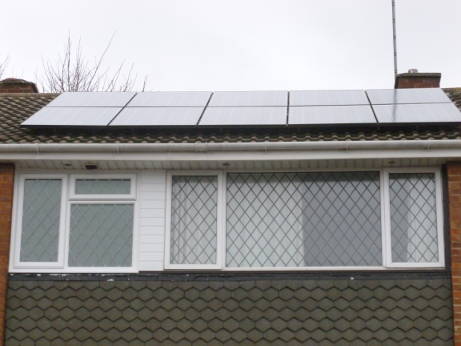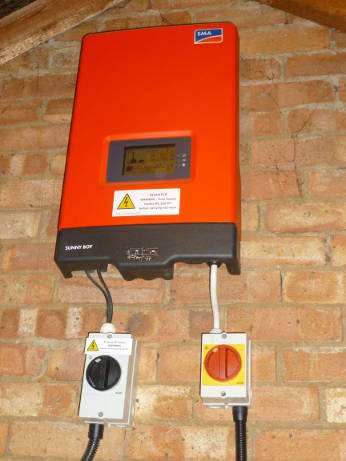
If you are reading this from hotter climes you might not think that generating solar energy was a viable idea where I live; that being England, known for its rainy and cloudy weather, it does not have enough daylight hours to be worth it. According to the UK's Met Office, the average total annual sunshine in the United Kingdom is 1339.7 hours, which is just under 30% of the maximum possible.
For climactic and political reasons, European governments are investing heavily in alternative forms of energy to reduce their dependence on fossil fuels. These alternatives include solar, wind, wave and bio-fuel. In their efforts to give the renewable energy industry a leg up, the UK has launched subsidy programs aimed at making it cheaper for the average person to benefit from the new technologies while the cost of purchase is still high.
In my personal case, I opted for an array of 10 panels on the roof of my house. I say 10 because I had room for only that many. There being many companies producing panels and many companies installing them, my sourcing decision was based on two factors: internet research into panel manufactures and word of mouth when it came to finding the right installer. There are two countries at the forefront of solar panel manufacturing. One is known for the high quality of its engineering and the other for the low cost of production. These are Germany and China respectively. In 2013, Germany was the European leader in terms of installed solar capacity at 3.3 Gigawatts or 436 Watts per habitant [cf.].
My research broadly told me that if you bought from Germany you bought at a slightly higher cost but with the assurance of quality. Buying from China meant a cheaper price but the quality varied. As this was going to be a long term investment for me I went for German-made panels and a DC-AC solar inverter. The installer I found was an ex-colleague who had left IT to retrain as an alternative energy installer. Each panel cost a total of £600 to buy and install, giving an initial outlay of £6k. This price included the solar inverter that converts the DC current produced by the panels to mains AC at 240V.
Sounds like a lot of money, I know, but what makes this attractive is that I am paid a fixed amount of 21 pence pence per kilowatt-hour for the energy I produce. This rate is known as the the Feed In Tariff (FIT). I also benefit from the free electricity produced during the day. My commitment is to submit my solar meter reading to my energy provider once a quarter and a few weeks later I receive a cheque through the post.

When averaged out over a year, my combined energy bill (electricity + gas) came to £62 per month for 2014. As a result of the record breaking summer of 2014 my average monthly income from the panels was £100 per month; i.e. a net income of £38 per month, thus neutralising my fuel bill. The best bit about this is that the government has made this income tax free and guaranteed it for 25 years. Any future reduction in the tariff will not apply to me.
From these numbers you can see that the panels will pay for themselves in 5-6 years. The only inconvenience was having scaffolding erected outside at the house so the installers could do their work. The solar inverter was installed in the roof space and the work in total lasted for a few days. The panels themselves were surprisingly light and easy to carry up to the roof, even by a single person.
Having solar panels has also changed my consumption patterns. I now turn on the washing machine or use the bread maker during the day to take advantage of the free energy produced. Any surplus is fed into the national electricity grid.
I would definitely recommend this to anyone who has a few thousand pounds to spare. Two things you might want to consider:
- The direction of your roof: Ideally it has to be facing south-east to south-west.
- The location and surroundings: Is the roof shaded by buildings or trees? My house happens to be on top of a hill. So it sees a longer arc of daylight and is not in any shade.
I see this is as a good investment. In the future when battery technology improves, each home could generate and store for its own needs and be independent of the grid or off-grid as it is commonly known.